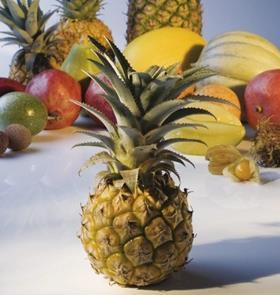
Once very much a niche category of the UK fresh produce market, tropical fruits have been growing in popularity and availability for a number of years now. Whereas they would once have been considered luxury items, to be enjoyed only occasionally, now some of them, such as mango and pomegranate, have become regular – and more affordable – purchases for many consumers. The rising strength of the category is demonstrated by solid sales growth of 3.4 per cent in the year to 24 March, according to Kantar.
It cannot be denied that the main challenge for tropical fruit suppliers still lies in encouraging shoppers to experiment and try fruits that they perhaps aren’t used to. Indeed, Kantar data from the past 12 weeks shows that rising penetration is the biggest driver in the category. And encouragingly, shoppers also continue to buy slightly more per trip and more often. “Wealmoor shopper research demonstrates that once converted into exotic fruit, consumers’ basket spend increases, hence these are valuable consumers to retain in the ever-competitive battle for footfall,” says the supplier’s national account controller Per Hogberg.
One of the main drivers of this sales growth is the wider health trend, which is of course benefitting suppliers of most fruits and vegetables, however certain ‘super fruits’ such as kiwis and pomegranates are perhaps particularly well placed to take advantage since they are rich sources of antioxidants and vitamins.
In a similar vein, suppliers of jackfruit are profiting from the rise of veganism and reduced-meat diets, with 21 per cent of the UK population now claiming to be flexitarian. During Veganuary this year Google searches for the meat substitute rose by 566 per cent, according to Blue Skies.
Some of the biggest year-on-year sales growth in the tropical category is being seen in lychees (up 187.4 per cent), passionfruit (up 39.7 per cent) and persimmon (up 24.2 per cent), but Hugh Pile of Blue Skies stresses that the “core tropical powerhouses” of mango (up 8.5 per cent) and pomegranate (up 13.7 per cent) remain key to the growth of the category. Meanwhile, melons have contributed £12.5m to the market, growing at eight per cent.
A major driver of sales has been price, with tropical lines now featuring more regularly in front-of-store deals at British supermarkets, while EDLP lines such as pineapple have seen a resurgence. Pile praises the “great work” of the discounters in encouraging consumers to experiment, mentioning Aldi’s ‘Super Six’, Jack’s ‘Fresh Five’ and Lidl’s ‘Pick of the Week’, which he says have removed price barriers for lower-income families.
Hogberg adds that the mango category “has also been evolved through specification and weight changes to meet more attractive price points, all of which should continue to drive penetration and frequency.” He emphasises, however, that suppliers and retailers must continue to work together to use all of the crop, as this focus on price is increasing demand of smaller sizes, making it more difficult to sell larger fruit.
Despite these growing sales opportunities, Hogberg notes that suppliers are facing continued pressure on costs, labour and exchange rates – all of which have been impacted by Brexit. “All of these factors are increasing pressure on the supply chain and grower relationships, but relationship history and strength has ensured that supply has been maintained through this challenging period,” he says. He adds that the company has been transitioning historical airfreight supply chains to sea to mitigate costs.



